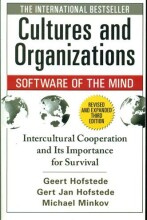Summary: Principles Of Human Physiology. | 9780321681829 | Cindy L Stanfield
- This + 400k other summaries
- A unique study and practice tool
- Never study anything twice again
- Get the grades you hope for
- 100% sure, 100% understanding
Read the summary and the most important questions on Principles of human physiology. | 9780321681829 | Cindy L. Stanfield.
-
1 H18 Zenuwstelsel en zintuigen
This is a preview. There are 6 more flashcards available for chapter 1
Show more cards here -
What are nuclei (nucleus)?
cell bodies of neurons that are grouped together in central nervous system
-
pathways, tracs, commisures
bundles of axons
-
3.4.1 ATP: The medium of energy exchange
This is a preview. There are 3 more flashcards available for chapter 3.4.1
Show more cards here -
Through what reaction is ATP synthesized?
With Pi = phosphor. -
What type of reaction is the formation of ATP?
A phosphorylation reaction, because phosphor is added. -
What are the 2 basic processes through which ATP synthesis occurs and what are the reaction formulas?
- Substrate-level phosphorylation:
- Oxidative phosphorylation:
-
3.4.2 ATP in action
-
Which energy is used to synthesize ATP and why?
The energy derived from glucose oxidation, because it occurs spontaneously due to its negative energy change. -
How many ATP is synthesized from one mole of glucose and give the formula?
1 mole of glucose releases 686 kcal energy, and 7 kcal of energy is required to synthesize 1 mole of ATP. Therefore glycolysis of 1 mole of glucose releases enough energy to make 98 moles of ATP. However, only 1/3 of this amount (38) is actually synthesized. -
3.5.1 Glycolysis
This is a preview. There are 1 more flashcards available for chapter 3.5.1
Show more cards here -
What is gylcolysis and give the formula?
The splitting of sugar. Each glucose molecule (with 6 carbons) is broken down into 2 molecules of pyruvate containing 3 carbons each. -
Is oxygen consumed during glycolysis?
No, there is no oxygen consumed during glycolysis and therefore there is also no carbon dioxide produced. -
3.5.2 The Krebs cycle
This is a preview. There are 4 more flashcards available for chapter 3.5.2
Show more cards here -
How many turns of the Krebs cycle are generated by the glycolysis of 1 glucose molecule?
1 glucose molecule produces 2 pyruvate molecules and therefore also 2 acetyl CoA molecules through the linking step. 1 acetyl CoA molecule participates in 1 complete turn of the Krebs cycle. ==> the glycolysis of 1 glucose molecule leads to 2 complete turns in the Krebs cycle.
- Higher grades + faster learning
- Never study anything twice
- 100% sure, 100% understanding

































